Search Results
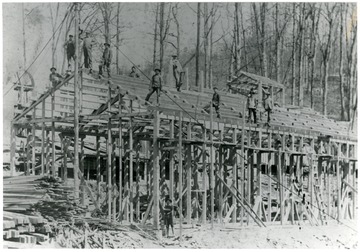
- IDNO:
- 002103
- Title:
- Building the Company Store Located Between No.1 and No.3, on a hill.
- Description:
- Workers construct the wooden frame for a company store.
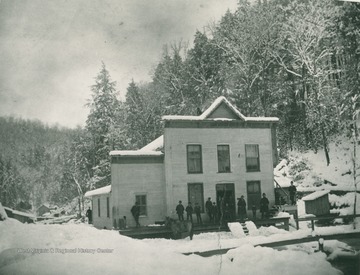
- IDNO:
- 002104
- Title:
- Company Store and Office, Louisville Coal and Coke Company, Goodwill, Mercer County, W. Va.
- Date:
- ca. 1887-1892
- Description:
- The Yukon-like scene shows the company store and offices of the Louisville Coal and Coke Company located at Goodwill in Mercer County, W. Va., ca. 1890.
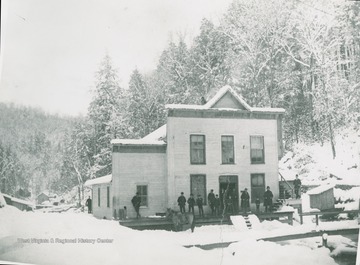
- IDNO:
- 002105
- Title:
- Company Store and Office, Louisville Coal and Coke Company, Goodwill, Mercer County, W. Va.
- Date:
- ca. 1887-1892
- Description:
- The Yukon-like scene shows the company store and offices of the Louisville Coal and Coke Company located at Goodwill in Mercer County, W. Va., ca. 1890.
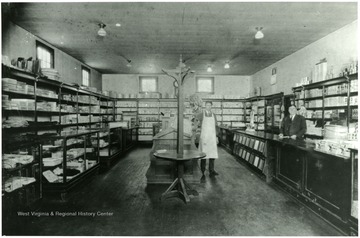
- IDNO:
- 002106
- Title:
- Company Store Interior, Chiefton, W. Va.
- Description:
- The Company Store at Chiefton, W. Va. Store manager Bartlet is the first on the right.
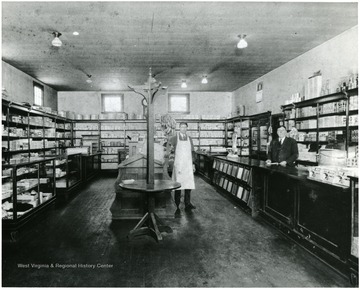
- IDNO:
- 002107
- Title:
- Company Store Interior, Chiefton, W. Va.
- Description:
- The Company Store at Chiefton, W. Va. Store manager Bartlet is the first on the right.
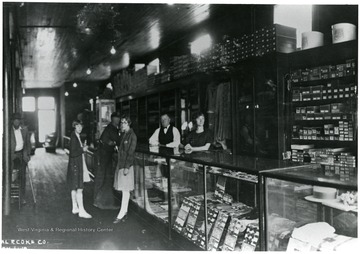
- IDNO:
- 002108
- Title:
- Customers in a Coal Company Store
- Description:
- A Company store with two people behind the counter with four people standing on the other side.
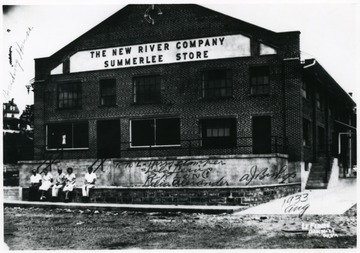
- IDNO:
- 002109
- Title:
- New River Coal Company, Summerlee Store
- Date:
- 1933/08
- Description:
- The Summerlee Store at the Summerlee Mine of the New River Company. The people sitting in front of the store from right to left; Harry Stamper, Lola Lewis, A.R. Long, Delia Alexander, A.J. Bishop.
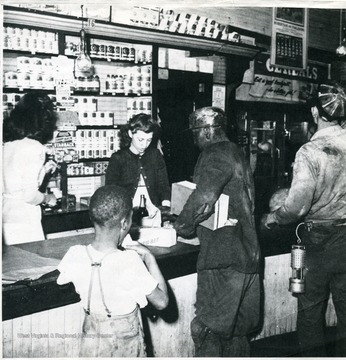
- IDNO:
- 002110
- Title:
- Miners in a Coal Company Store
- Description:
- Man buying things from a unknown company store.
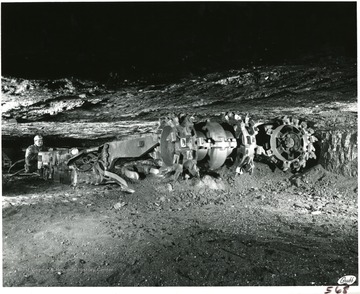
- IDNO:
- 002111
- Title:
- Continuous Mining Machine in Operation in a Four Foot Seam
- Description:
- A continuous mining machine operating in a four foot seam.
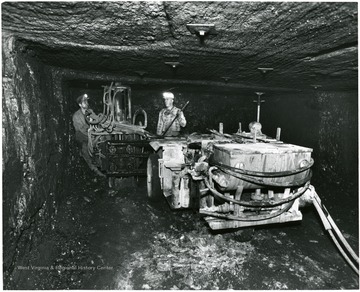
- IDNO:
- 002112
- Title:
- Miner Roof Bolting
- Date:
- 1957/04/18
- Description:
- Two men with equipment putting up bolts to support the mine roof.

- IDNO:
- 002113
- Title:
- Cattle Grazing on Reclaimed Fields Which Have Been Affected by Open-Cut Mining
- Description:
- After open-cut mining has been completed in a given area, the land affected is graded and planted in forage crops. Seeding done to date has consisted of a mixture of legumes and grasses with alfalfa predominateing, but also included were sweet clover, birdsfoot trefoil, brome grass and orchard grass. Other mixtures which have been used include alfalfa and brome grass, and birdsfoot trefoil with blue grass. A few years after seeding, these fields will supposrt a good stand of forage crops. White faced Hereford cattle are then turned out for grazing. Experience has shown that the cattle often gain wieght faster in these fields than in adjoining fields unaffected by open cut mining. It is also interesting to note that when the cattle are given their choice of a grazing spot, they invariably choose the restored fields. The open-cut mining operations contribute greatly to the enrichment of this soil. This is because in the process of open-cut mining a vein of water-soluble limestone is broken up and mixed in with the soil. This photograph shows white faced Herefords grazing in a field which has been affected by open-cut mining and later graded and planted. Hanna Coal Company, Division of Pittsburgh Consolidation Coal Company.

- IDNO:
- 002114
- Title:
- Iron Ore on a Conveyor Going Into the Smelter at Wheeling, W. Va.











